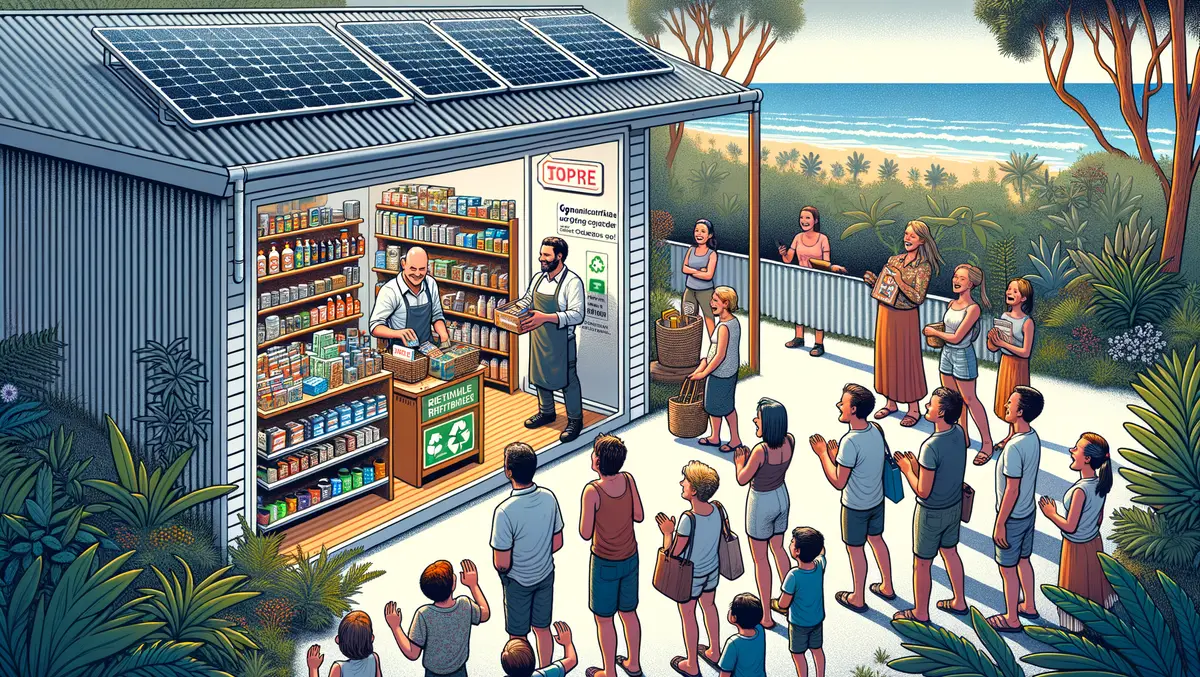
Less words, more action: How to become a more sustainable retailer
In a difficult economic climate, many retailers are struggling to balance sustainability with business needs. However, from greener delivery alternatives to better packaging choices, consumer demand for more sustainable options remains strong – and it's influencing how and where people spend their money. In a recent report, 71% of Australian respondents are worried about the state of our planet for future generations. 67% say that drastic changes are needed to our lifestyle.
Adding to this, the Australian Government has said it will intervene with regulation if retailers don't start to take responsibility for their waste, packaging, and entire product life cycle. The 'Seamless' initiative was launched by the Australian Fashion Council (AFC) last year to tackle clothing waste through a levy system to increase the number of garments being resold, repaired, reworn and recycled.
It imposes a 4-cent levy on every garment sold, to be paid by brands that choose to participate, mirroring an example set by the EU. The levy will fund research into sustainability for the industry and establish the infrastructure for textile recycling. Whilst some retailers have signed up to the scheme, others haven't, with Environment Minister Tanya Plibersek saying, "The alternative to this program isn't a weaker scheme with a lower levy; it's government regulation."
Today's retailers must find a way to provide convenient and fast shopping experiences whilst keeping costs low - and achieve that in a sustainable way. Here are three ways for meaningful, long-term outcomes.
1. Be inventory aware
Poor inventory visibility results in waste and logistical inefficiencies that impact margins. Over-purchasing and overstocking, leading to unnecessary markdowns or, worse, more landfills is just the start. Overselling, when a retailer runs out of stock but allows customers to complete purchases, has become a huge thorn in retailers' sides. New research shows that nearly 40% of retailers are forced to cancel at least one in ten orders, primarily due to inaccurate inventory data. This results in fulfilment delays, cancelled orders and unhappy customers.
The cost of overproduction and surplus inventory is a huge problem, with a large amount of capital tied up in inventory sitting unsold in warehouses or at other physical locations. Investing in the latest order management software allows retailers to ensure they have an accurate forecast of demand and can buy or manufacture the correct amount of stock to avoid waste. It will also enable them to ensure the delivery process is as efficient as possible, streamlining operations for enhanced sustainability.
2. Make the last mile count
A streamlined omnichannel offering can help retailers eliminate the unnecessary and wasteful shuttling of goods back and forth between outlets and consumers. It can make it easy to group products together to avoid multiple trips or to ensure that products are sent from the closest distribution centre, reducing miles in transit. Retailers can also use existing replenishment routes for order consolidation to save on transfer costs, emissions, and the cost of delivery to the customer.
Many of today's eco-aware consumers favour sustainability over speed. As such, providing a range of sustainable shopping and delivery options can make a huge difference to the environment whilst having a minimal impact on business processes. Alternative delivery options, such as click and collect, can save a home delivery altogether. Retailers may also look to reward customers for choosing these greener alternatives with incentives such as cheaper delivery or points in exchange for no-rush shipping. Broadening the range of delivery options and incentives will result in huge financial gains in the current economic climate, where brands must find a way to differentiate themselves.
3. Rethink returns
The average ecommerce return rate is between 20 and 30%, which represents a huge operational cost and headache for retailers. When people buy goods online, they are almost three times as likely to return them compared with purchasing them in-store.
A considerable amount of returned goods ending up in landfill, which is damaging from both an environmental and cost perspective.
Retailers should take proactive action to minimise the likelihood of returns. This begins with reviewing how products are merchandised online, with accurate photos, descriptions, and sizing information, all of which help to resolve customer queries upfront. To help reduce returns, The Iconic offers a universal sizing tool on its mobile app, which helps customers find their size in any given brand using algorithms that compare a multitude of global sizes within seconds.
Offering a variety of return options also helps retailers to decarbonise logistics. For example, lockers in shopping malls, cycle couriers and crowd shipping pick-up options help make the returns process simpler and greener. A circular model fuelled by effective processing can also help retailers keep returned items in circulation longer, with brands such as Adidas implementing programs to recycle used products. Finally, returns offer retailers valuable insights about their products, customers, and marketing strategy which retailers can gather and analyse. By assessing returns patterns, retailers can identify key trends such as quality or sizing issues and adjust accordingly to limit future issues.
Customer pressures for greener alternatives coupled with increasing regulatory scrutiny makes sustainability a strategic priority in 2024. Luckily, today's retailers have an array of modern technologies at their fingertips designed to make the entire supply chain more cost-effective and sustainable while boosting the customer experience. It's a win-win for retailers who recognise that a green future is a bright future.

